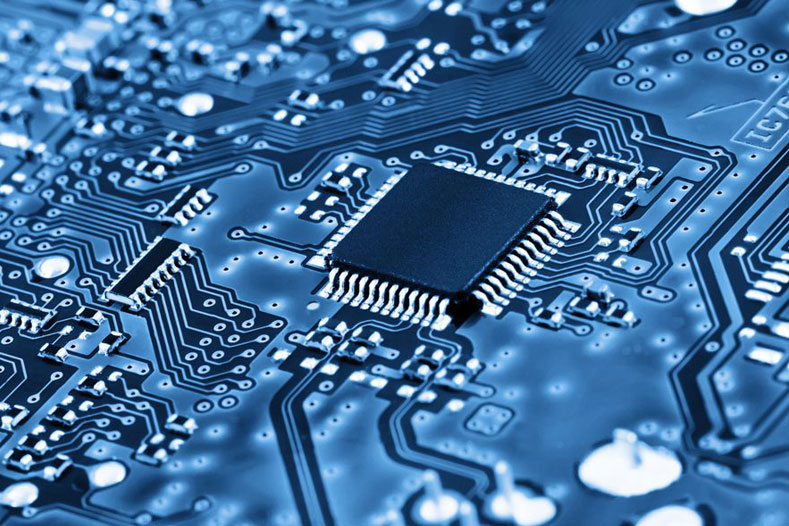
Connectivity & NMS Servers
Our engineers are adept in desinging a centralized network management system, that effectively monitors and manages all of the network components. It supports multiple system-level and KPI monitoring metrics that enables the operations team to quickly and effectively monitor and manage the network.
The Network management systems also serves as a centralized log collector of all then network elements. The logs are categorized into critical, major and info levels. Thresholds can be defined, and alerts can be triggered once the thresholds are crossed.
Today the choice of IoT connectivity and embedded connectivity options is broad and growing. Cellular networks, Wi-Fi, Bluetooth and more each offer their own advantages and drawbacks. Navigating those options takes experience and skill, and this is where we add enormous value. Unique features offered by us include : -
- Complete bandwidth consumption and network usage
- Role-based user profiles
- Centralized cloud management
- Web-based user interface
- Real-time analytics for public & private networks
We are Your Connectivity Experts
Every year our engineering teams work on hundreds of IoT, embedded, and mobile device projects that demand varying levels of connectivity. They understand that the connectivity choice is crucial and that each vendor has different expectations for their product, different constraints from stakeholders, and different demands from end users. What's more, with a cloud connection devices open themselves to future development and updates driven by data insights, remote monitoring, and the capacity to push updates for maintenance and functionality.
There is one connectivity option that can serve all IoT vendors or address all IoT use cases. Wi-Fi IoT may offer advantages that 5G IoT cannot, and low energy Bluetooth might be the best connectivity option for one of your devices despite the others on your platform relying on a LPWAN, Lora, Sigfox, 3G or 4G cellular connections. Our experts help you choose the right connectivity option for the right device, guiding you to the best outcome for you and your end users.
A variety of application layer protocols exist for embedded connectivity and our teams are experts in navigating them all. Whether common web (HTTP and HTTPS), email (SMTP), or file transfers (FTP), network protocols that include SNTP and SNMP, or even DNS and DHCP, our engineers are able to ensure that the correct protocols are programmed into your device's embedded software to enable the connectivity that you demand.
We have the connectivity solution for every IoT project
Our engineers consider a variety of concerns, constraints, and capacities in assessing your connectivity requirements and making their recommendations. Among the most important are ten considerations below : -
OUTDOOR AND INDOOR COVERAGE/RANGE
IoT and embedded devices demand different connectivity coverages depending on their typical deployment and use cases. Bluetooth Low Energy Android offers a connectivity range measured in meters, while a proprietary LPWA like SigFox or Lora can see range extended to more than 15 kilometers.
ENERGY EFFICIENCY
Certain connectivity options draw more power and are less energy efficient than others. Mesh-connected devices running ZigBee 3.0 or similar are far less energy efficient than LoRa, and 2G cellular connections are far more energy efficient than competing 3G, 4G, and 5G cellular options.
UPLINK DATA RATE
The speed and capacity of a data connection can be essential to the success of an IoT or embedded project, but the demands of that project can vary. Sometimes a NB-IoT connection with a data uplink rate of just 20kbps is sufficient, while other projects may demand bandwidth in the range of a 5G IoT connections of up to 2 Gbps.
COMMUNICATION
Most connectivity options allow for bidirectional communication, however there are some limitations with regards to SigFox, where the downlink can be limited, and LoRa, where bidirectionality is only offered in Class A.
MOBILITY
Some connectivity options are better suited to deployment in a mobile device. Where mobility is an advantage or where it is essential, options such as traditional cellular (2G, 3G, 4G) or LTE-M can be good choices. Where it is less important, though, Bluetooth Low Energy is often a preferred choice.
LOCALIZATION OPTIONS
Where devices demand localization services - for example, relying on GPS or GLOSNASS coordinates - certain connectivity options offer better functionality. Cellular technologies (2G to 5G) are strong here, as are short range connectivity options such as Wi-Fi Low Power, or Bluetooth Low Energy.
QUALITY OF SERVICE
The reliability and quality of service can vary significantly, and the quantity and type of data being transferred from the device to the cloud can and will impact the connectivity choice. Cellular networks are typically superior to short range connectivity options (Bluetooth IoT, Wifi IoT Relay), which in turn are superior to some proprietary LPWAN options, depending on the device and the use case, of course.
SECURITY
While security is always an important concern, greater connectivity security usually also comes with a demand for more processing power and energy use. It's a trade off, and its why some connectivity options, including LPWAN options, offer only basic security while IoT devices connected to Wi-Fi can employ more advanced encryption.
CONNECTIVITY-RELATED OPEX
Besides the cost of the connectivity hardware (CAPEX) the ongoing costs of connectivity (OPEX) are an important consideration. As cellular technologies expand in capacity their cost increases (3G is significantly less expensive than 5G, for example) while SigFox or LoRacosts are low in comparison.
SCALABILITY
Traditional cellular and proprietary LPWAN connectivity options lend themselves to scaling and platforming. Short range connectivity options, on the other hand, when deployed alone offer far fewer options to scale as an ecosystem.
WE UNDERSTAND THAT THERE ARE MANY THINGS THAT GO INTO MAKING THE RIGHT CONNECTIVITY CHOICE. CONSTRAINTS AND DEMANDS, VISION AND END USER EXPERIENCE WILL ALL INFLUENCE THE CONNECTIVITY OPTION YOU CHOOSE, AND OUR ENGINEERS CAN HELP GUIDE YOU TOWARDS THE CONNECTIVITY CHOICE THAT WILL BEST SUIT YOUR NEEDS. YOU CAN TRUST OUR EXPERTISE AND TECHNOLOGY AGNOSTICISM, TO SERVE YOU IMPECCABLY.
